Madeleine Vionnet
Madeleine Vionnet : an avant-garde woman
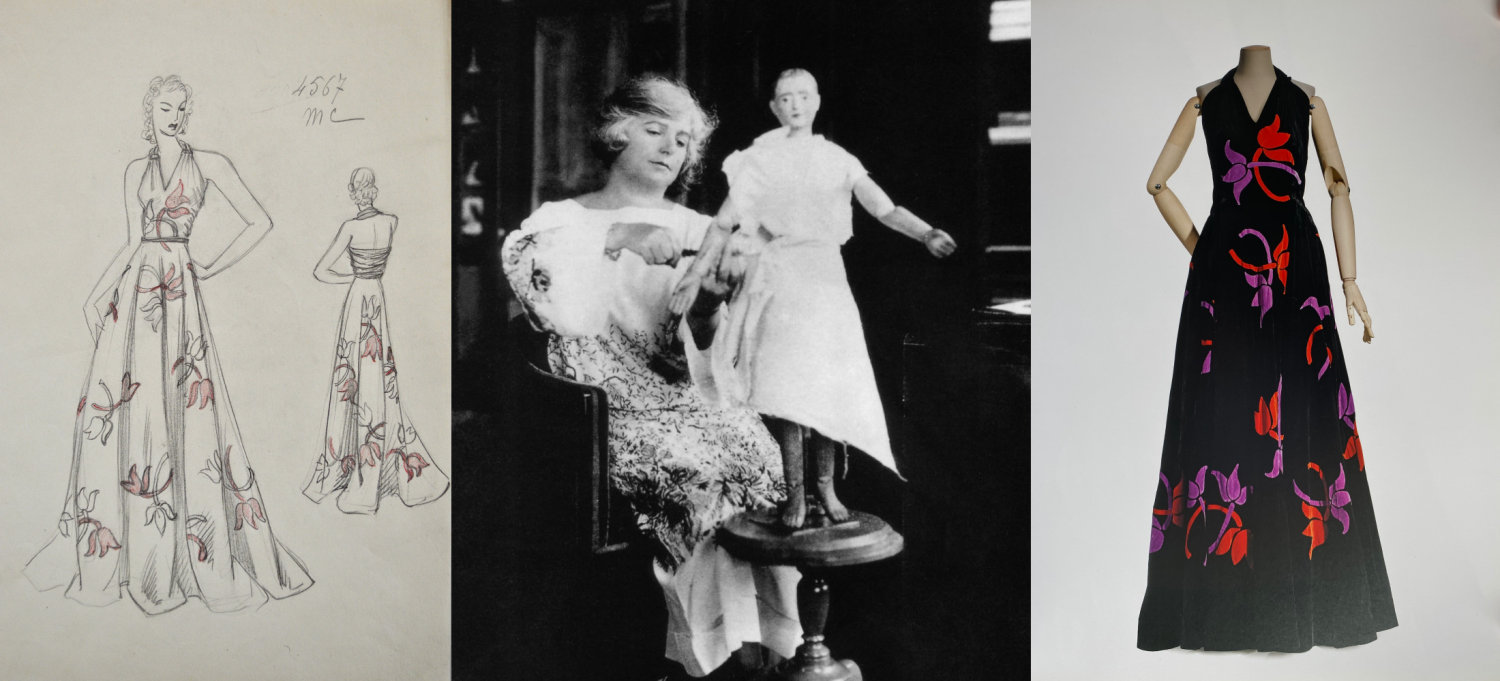
Training...
Madeleine Vionnet was born on June 22, 1876 in Chilleurs-aux-Bois. A good student during her childhood, she nevertheless left school at the age of 11 and took her first steps in the world of sewing, as an apprentice with a seamstress in her town.
Endowed with a strong independent character and not supporting the authority of a master, she decides to leave for England where in addition to learning English, she works alongside Kate Reily, a house of renowned couture in the country.
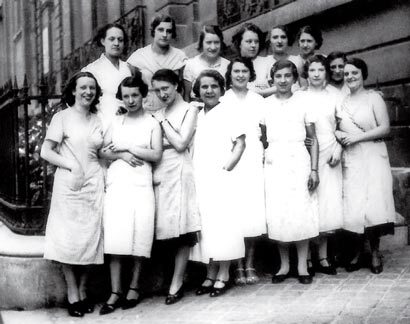
Vionnet, at Kate Reily's in London, in 1896
In 1901, back in Paris, she met the Callot sisters, with whom she worked for almost five years. There, Mrs. Gerber, the eldest of the sisters, will really teach her sewing, helping her to improve in this environment. Madeleine Vionnet will say later that it is thanks to the teaching of this woman that she was not content to create poor things.
A few years later, wanting to have the freedom to create her own models and express her vision of fashion, she decided to join Jacques Doucet. While abolishing the wearing of the corset, it will present dresses made with new cuts and will parade its barefoot models.
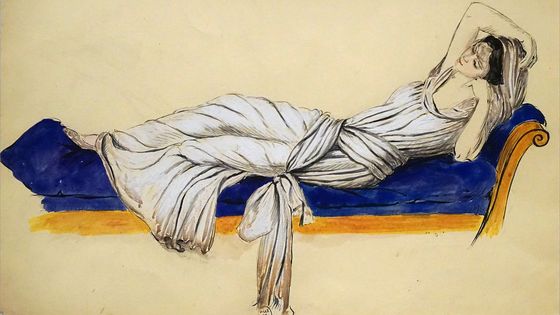
Sketch of a model from the winter 1912 collection
However, the seamstress quickly finds herself restrained and mistreated by the saleswomen who manage the house and who take malicious pleasure in humiliating and bullying her. So, Lantelme, an actress and long-time admirer of Vionnet, will suggest that she set up on her own. Thus in 1912, with the desire to no longer depend on anyone, Madeleine Vionnet opened her first house on rue de Rivoli.
Rue de Rivoli...
Her Parisian house on the first floor of 222 rue de Rivoli reveals from its opening, Madeline Vionnet's pronounced taste for interior decoration. By associating tradition and modernity, her theatrical apartment is more akin to the Louis XVI style than to the style of the 20th century.
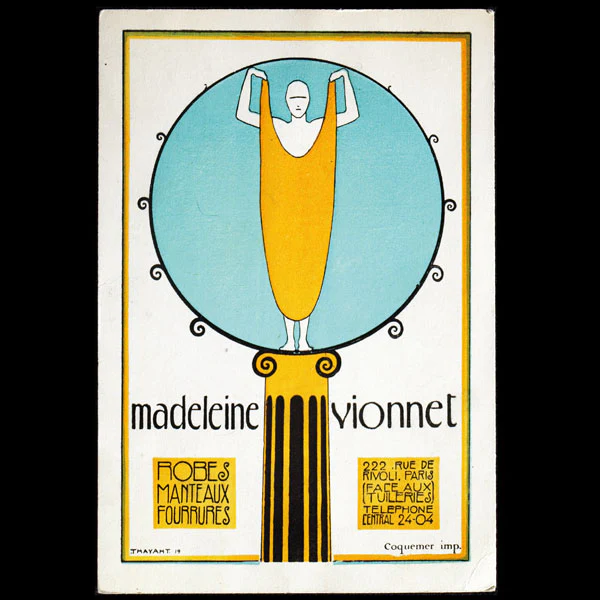
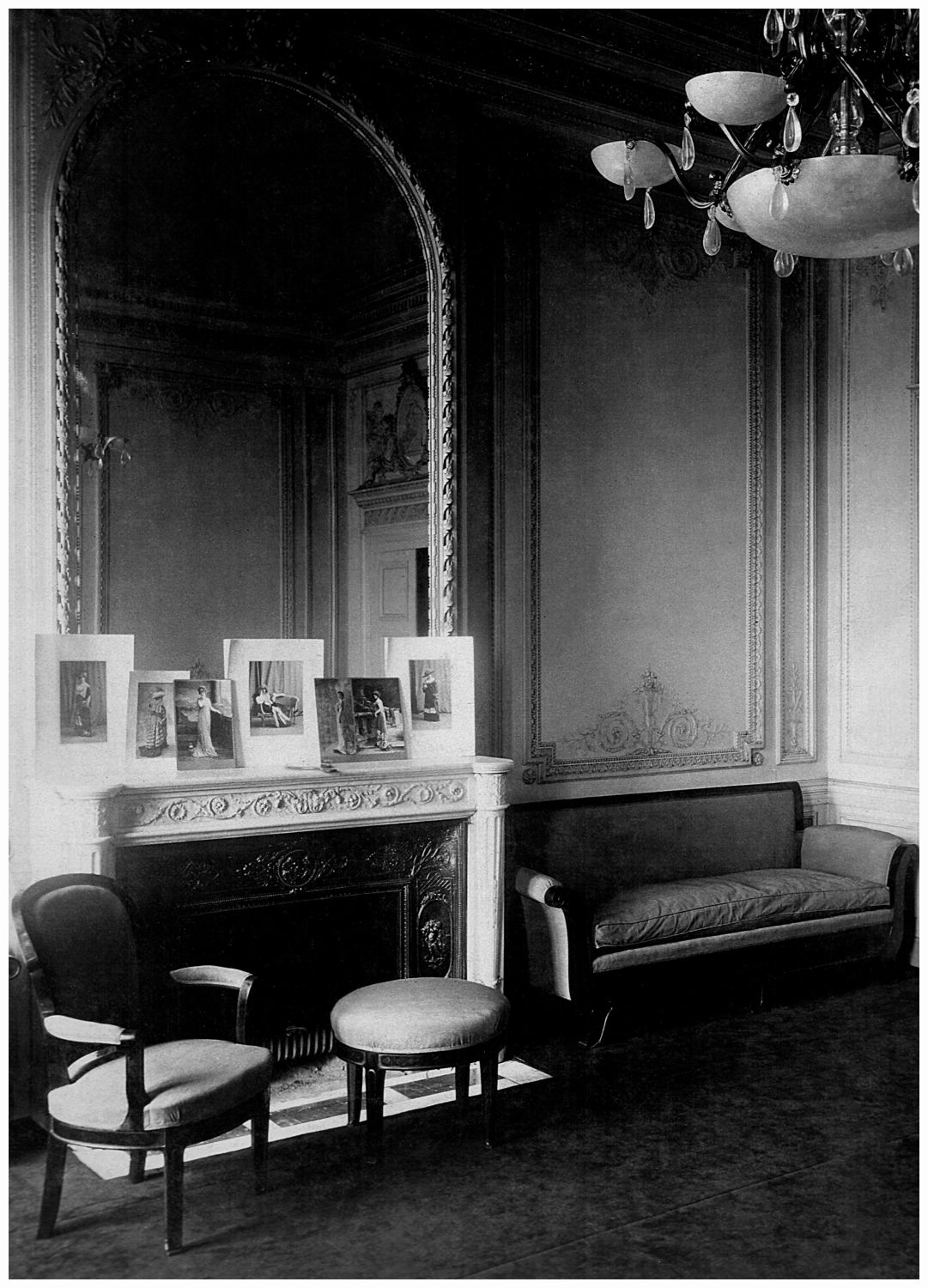
Map of the house 222 rue de Rivoli in Paris
Living room of the Vionnet house rue de Rivoli, circa 1912
It was during this period that Madeleine Vionnet met Marcelle Chaumont. A gifted technician, she quickly rose through the ranks within the Vionnet house and in 1914 became the first hand of the seamstress. If it acquires a role of partner by sharing half of Vionnet's creations from 1930, it is above all a great friendship that connects them. Indeed, Marcelle Chaumont became a close and faithful friend and made Madeleine Vionnet the godmother of her daughter, Madeleine Chapsal.
In 1914, due to the war, Vionnet was forced to close his house, only to reopen it in 1918. It was from this day that his real success began. While attracting the elite and socialites from all over Paris, his creativity only increased. In the 1920s, she invented the bias cut (1). Discovered almost by chance, this technique will revolutionize the world of haute couture and will earn it the nickname of “the queen of bias”.
(1) The bias, in sewing, is the fact of cutting a garment in the diagonal of the fabric and not in the direction of the straight grain. The bias gives the fabric an elasticity that gives it a supple fall, and allows rolling or even tight effects. Reason why the bias makes the corset disappear: you cannot flexibly mold the rigidity of the constraint
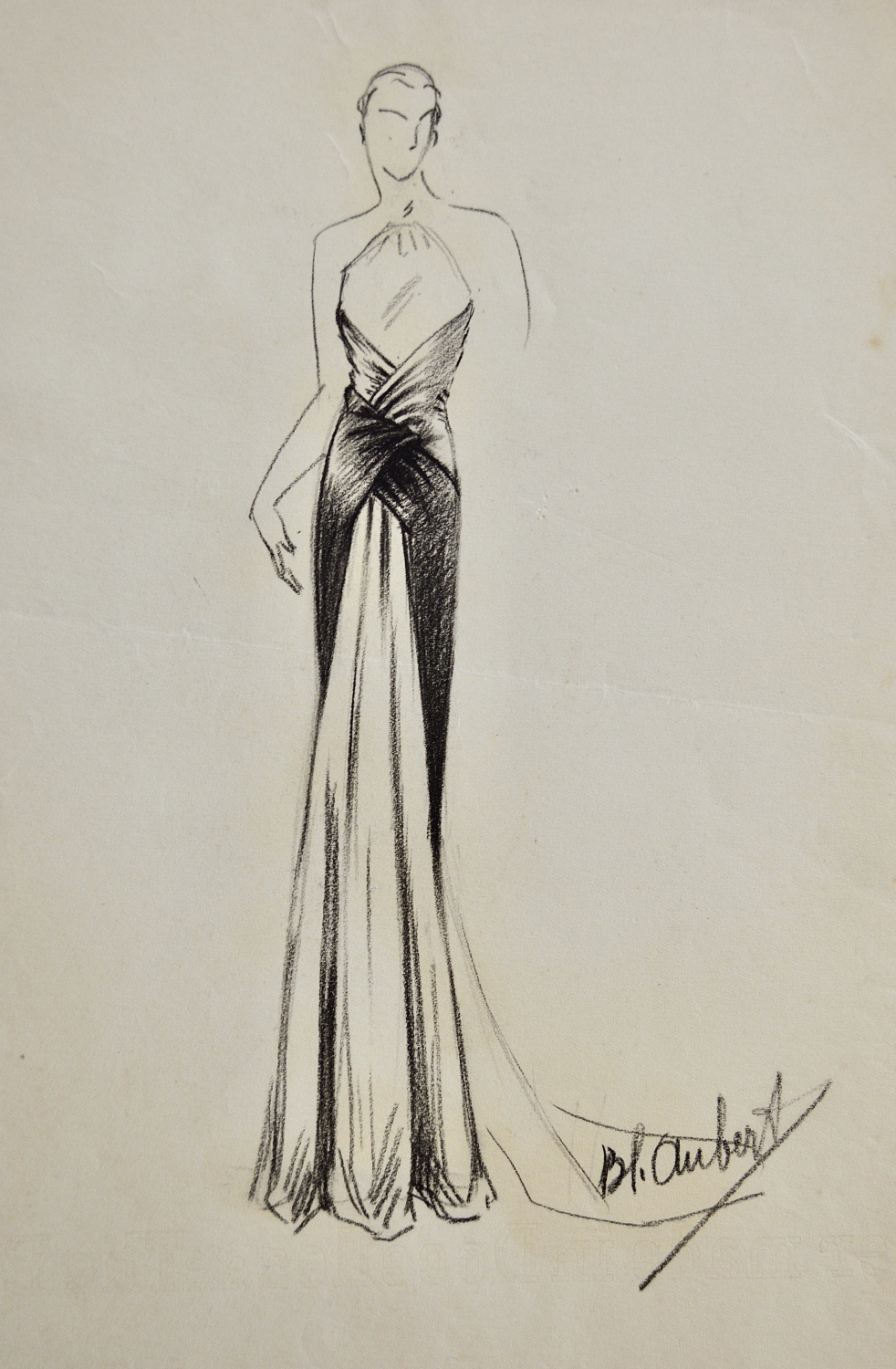
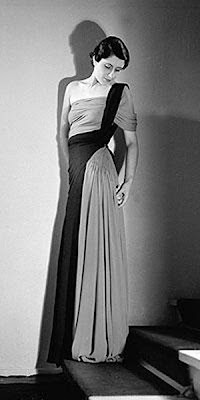
Drawing 239, lot 8 signed Blanche Aubert
(for sale on the site)
Dress with bias cut by Madeleine Vionnet, molding the woman's body without constraining it
In 1923, faced with growing success, Madeleine Vionnet had no choice but to move to the sumptuous hotel on Avenue Montaigne and opened the famous “Maison Vionnet”.
Avenue de Montaigne...
For Madeleine Vionnet, the architecture of the place, like her creations, must manifest a certain model of insurrection. The seamstress made her fashion house on Avenue Montaigne the emblem of her ethics, with the ideal of a modern society where the free woman was educated and in good health. In 1923, Madeleine Vionnet had more than 850 workers in nearly 28 workshops.
Concerned about its employees, they have kitchens, infirmaries and even dentists in their workshops. It is partly for this reason that “her little hands” (nickname of her workers) describe Madeleine Vionnet as a humane, modest and liberal boss. Jacques Griffe, creator and friend of Vionnet who worked alongside him from 1935 to 1939, said that working at Vionnet was like nowhere else.
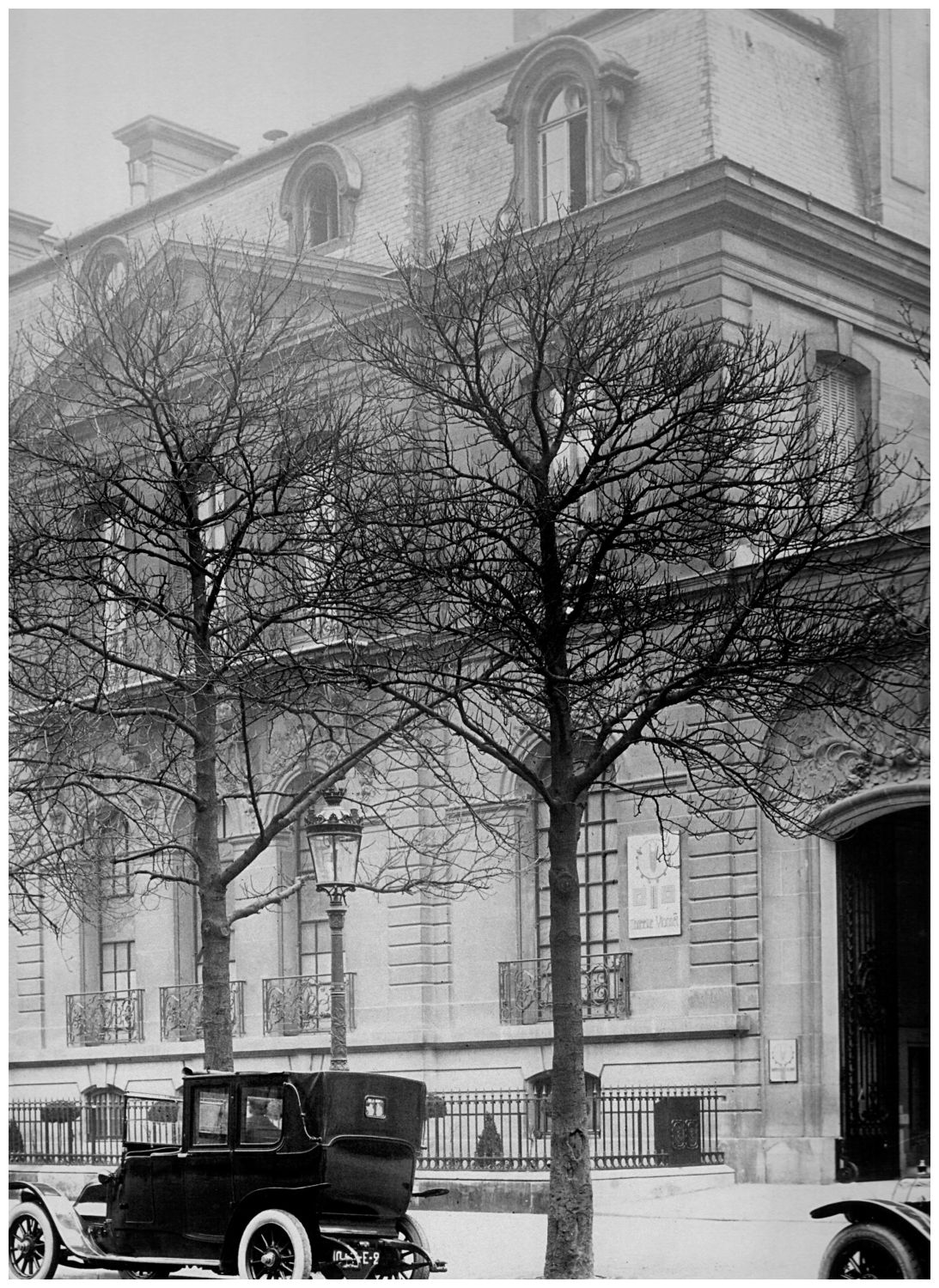
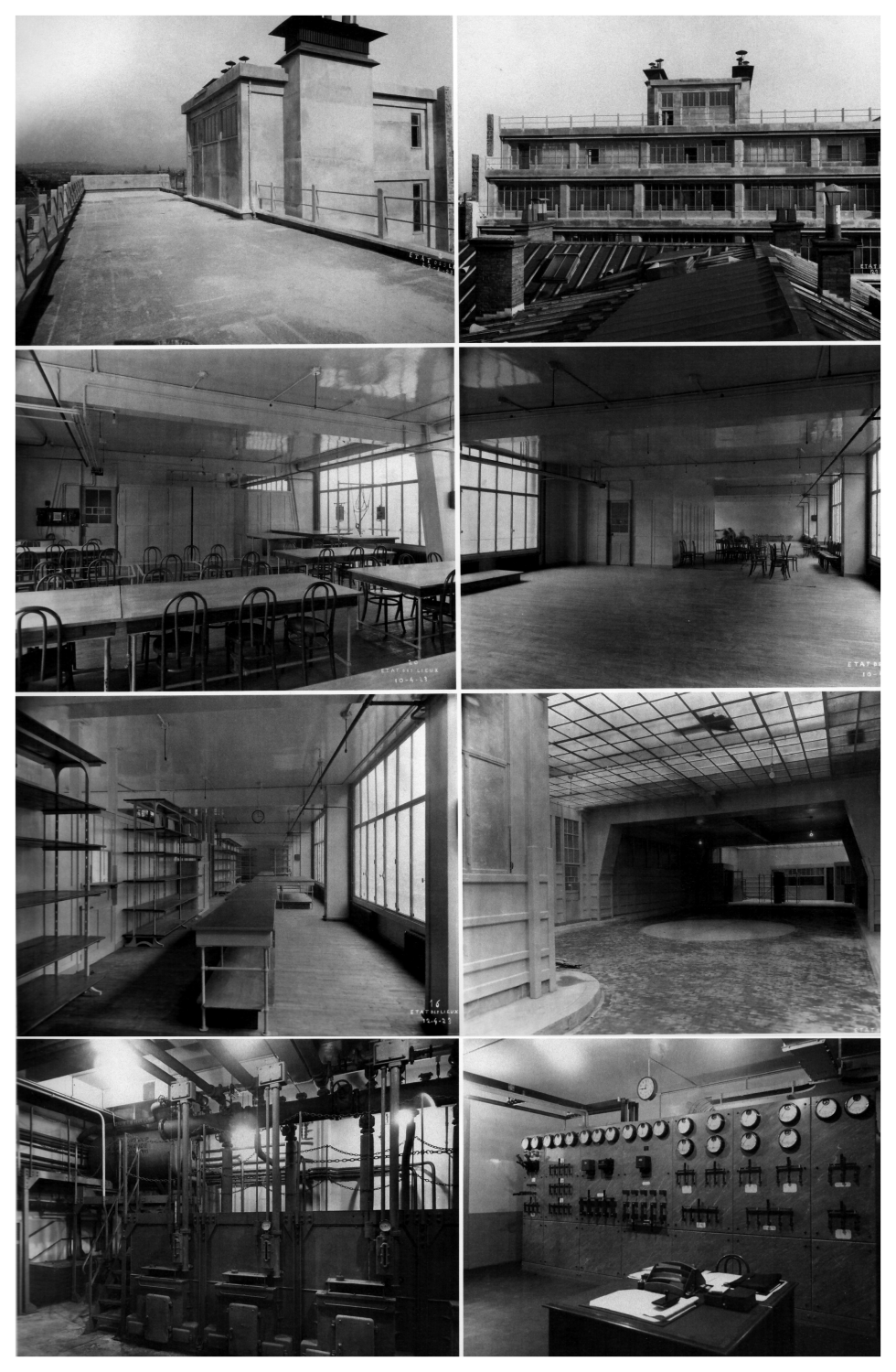
Facade of 50-52, avenue Montaigne around 1923-1928
Workshop, boiler room, handling
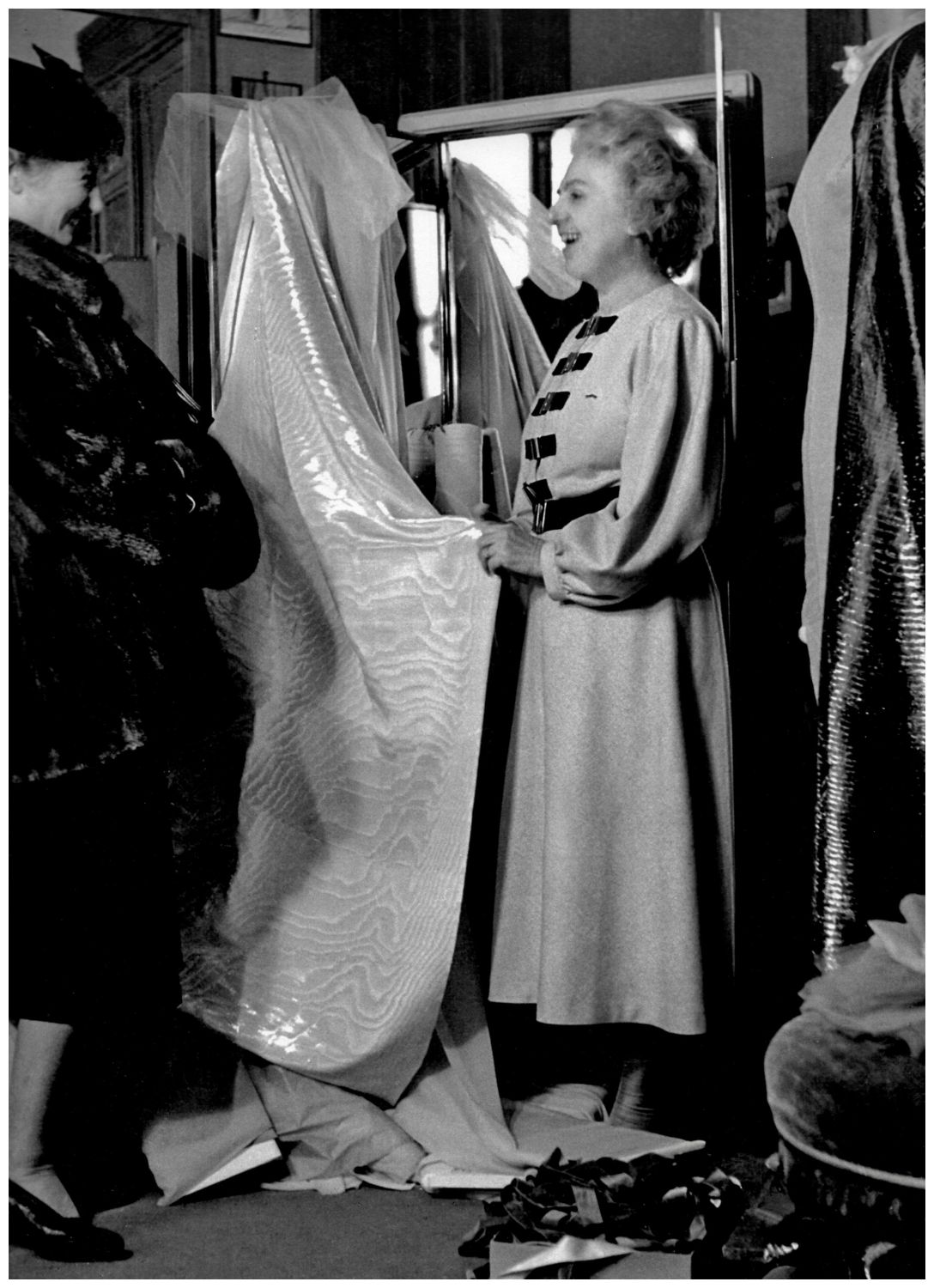
Madeleine Vionnet and Carmel Snow, around 1935
Her house, designed as a theater, is split in two. We find the stage decor, which has an aristocratic and luxurious aspect, and the backstage decor, which is more ideological, social and modest. Its decorations are unique and find their symbolic influence in Greek, Roman or even Egyptian sources.
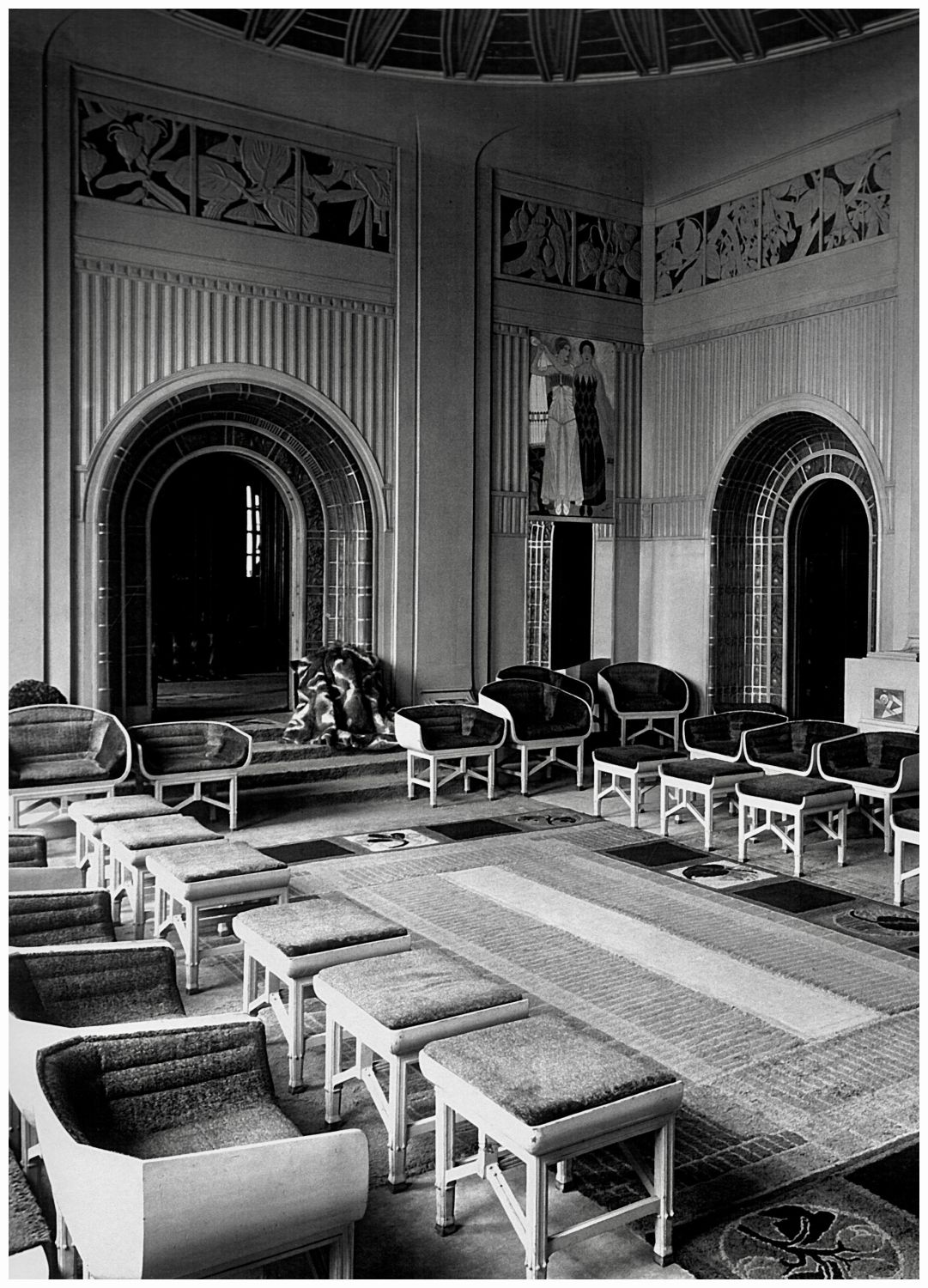
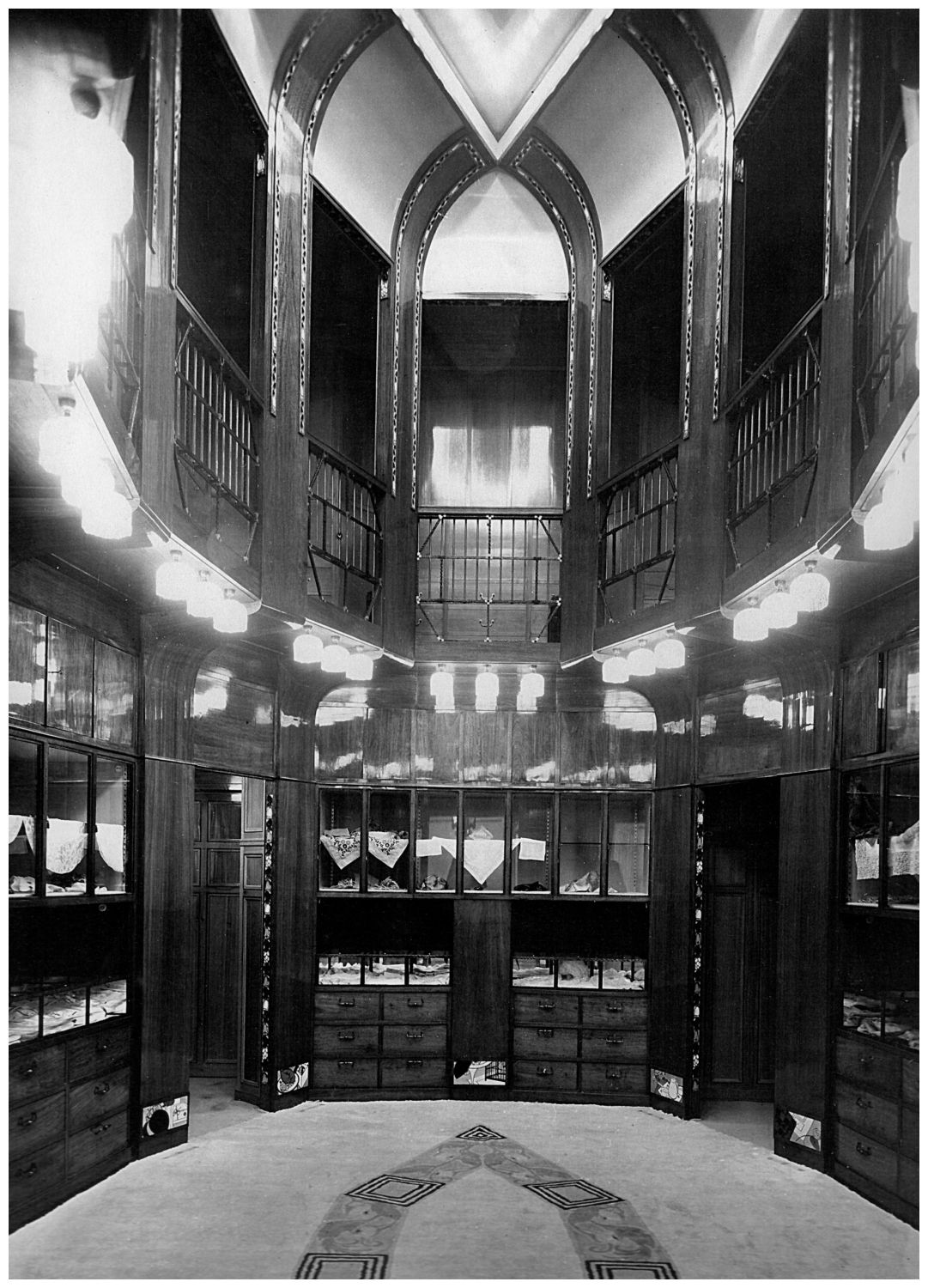
Large living room of the Vionnet house on avenue Montaigne
Vionnet lingerie salon on avenue Montaigne, circa 1923
What characterizes the creations of Madeleine Vionnet is above all her style, which will revolutionize the fashion of her time. Always inspired by ancient Greece, her soft dresses dress the body in a strict molding of harmonious folds, presenting a pleasant silhouette. Her creations have balanced proportions and allow freedom of movement for the women who wear them. With a preference for the purity of plain colors, embroidered flowers magnify some of her creations, without ever overloading them. Madeleine Vionnet presents dresses with complex cuts, but which give off the impression of great simplicity.
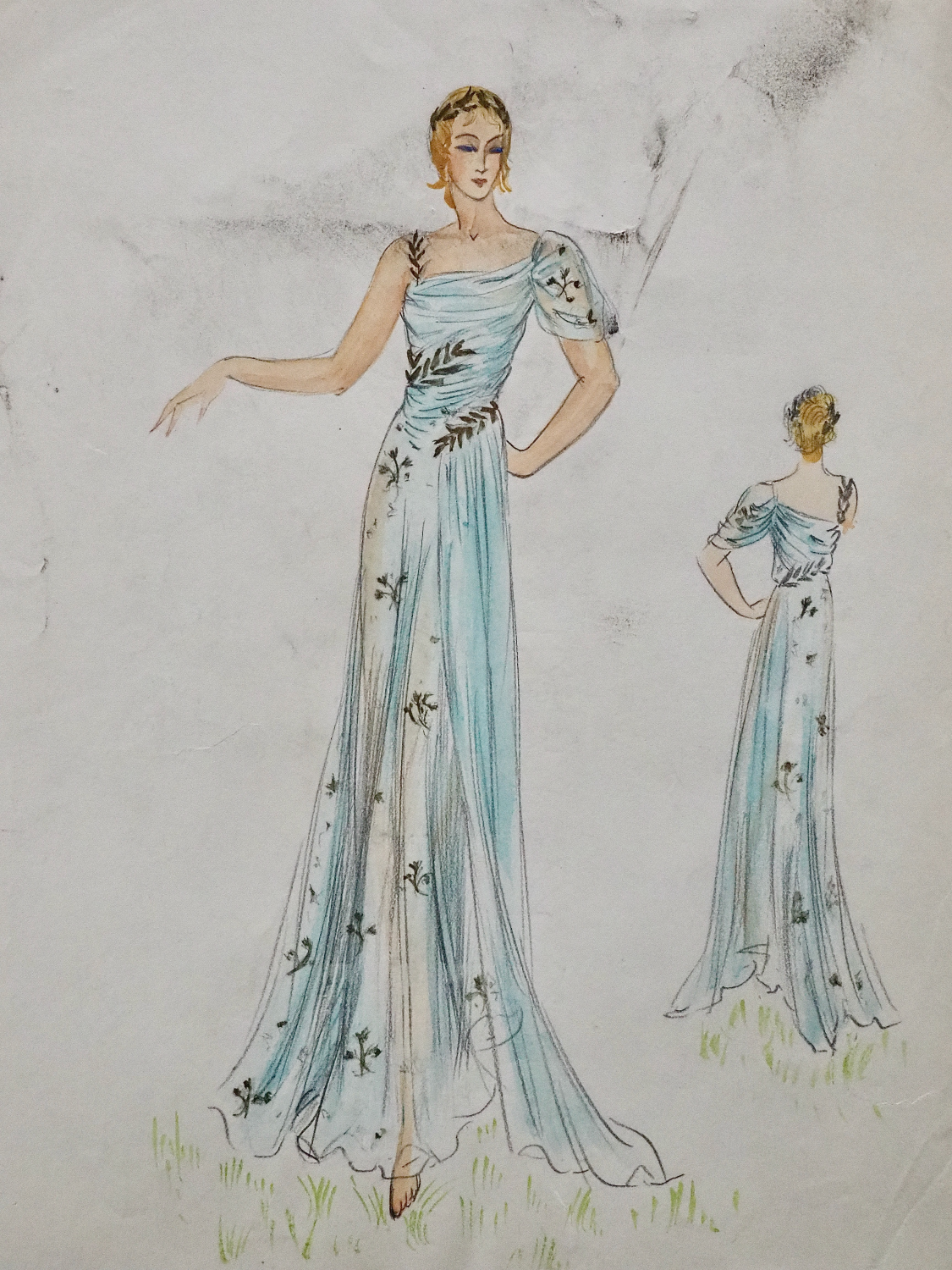
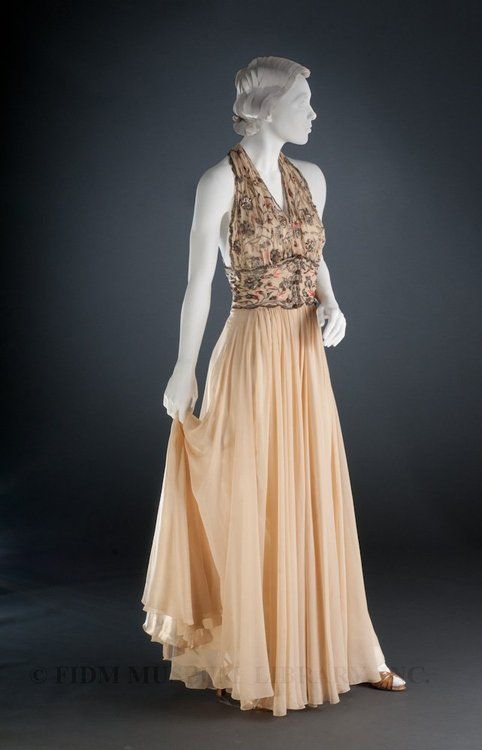
Drawing 129, lot 7
(for sale on the site)
Evening dress by Madeleine Vionnet (1936-1938)
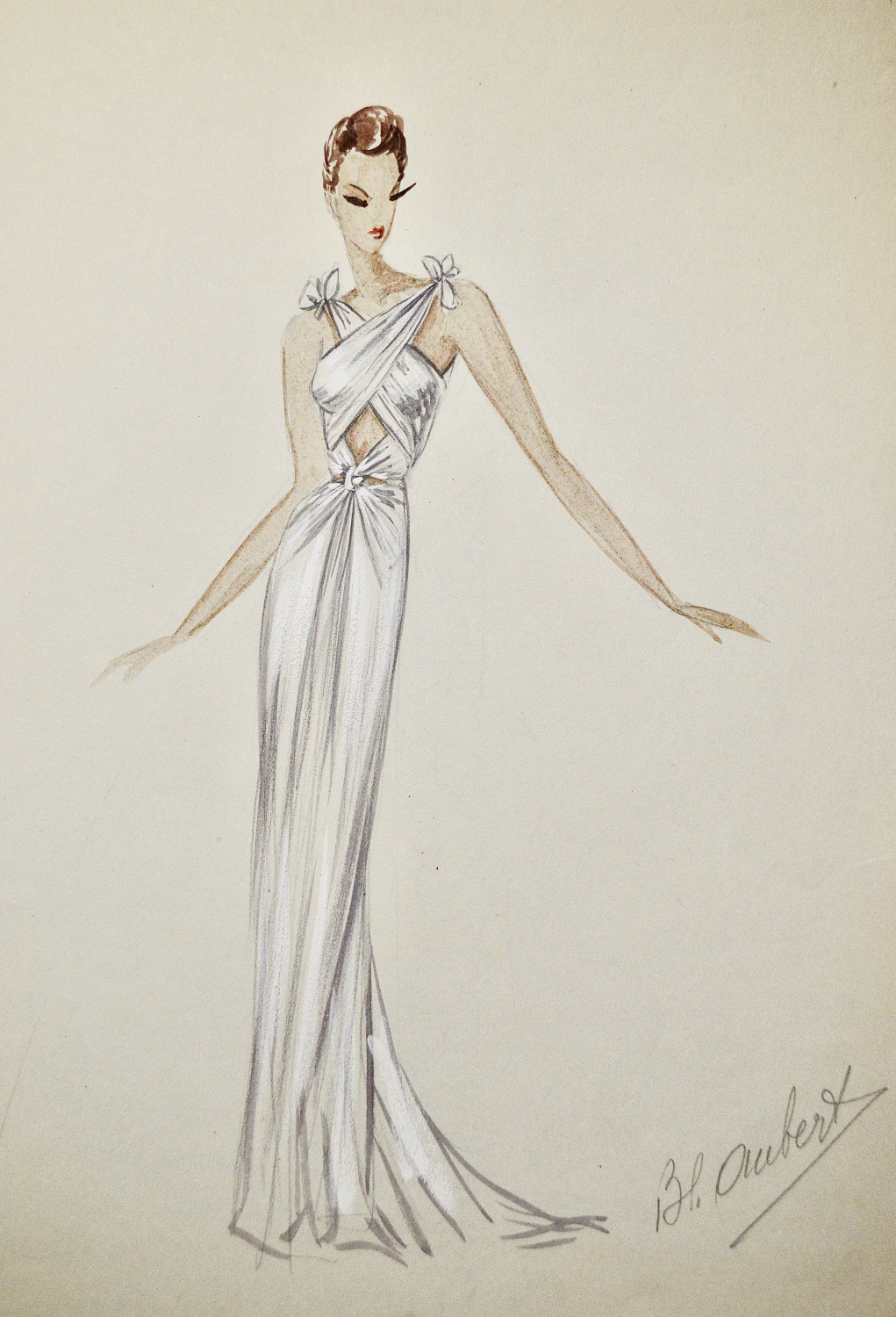
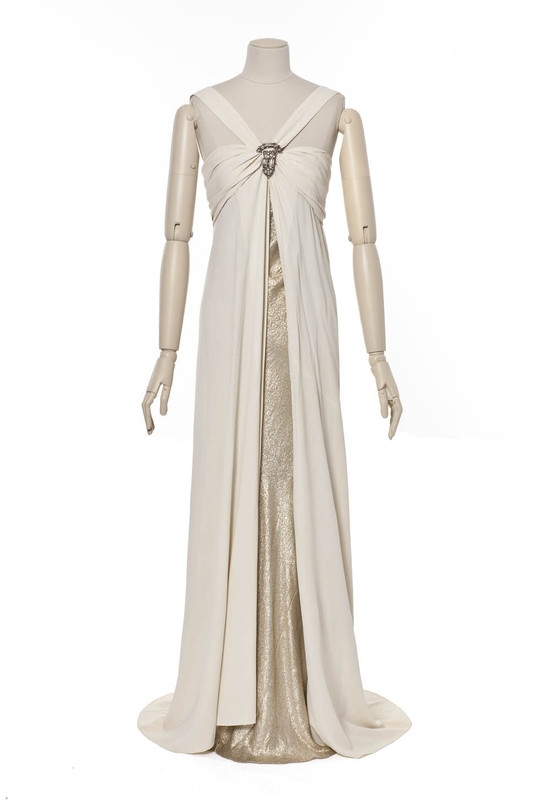
Drawing 14, lot 8 signed Blanche Aubert
(for sale on the site)
Evening dress, summer collection, by Madeleine Vionnet (1937)
The designer used to work on a small wooden mannequin that allowed her to immediately visualize the design of the dresses while completing their production in her imagination.
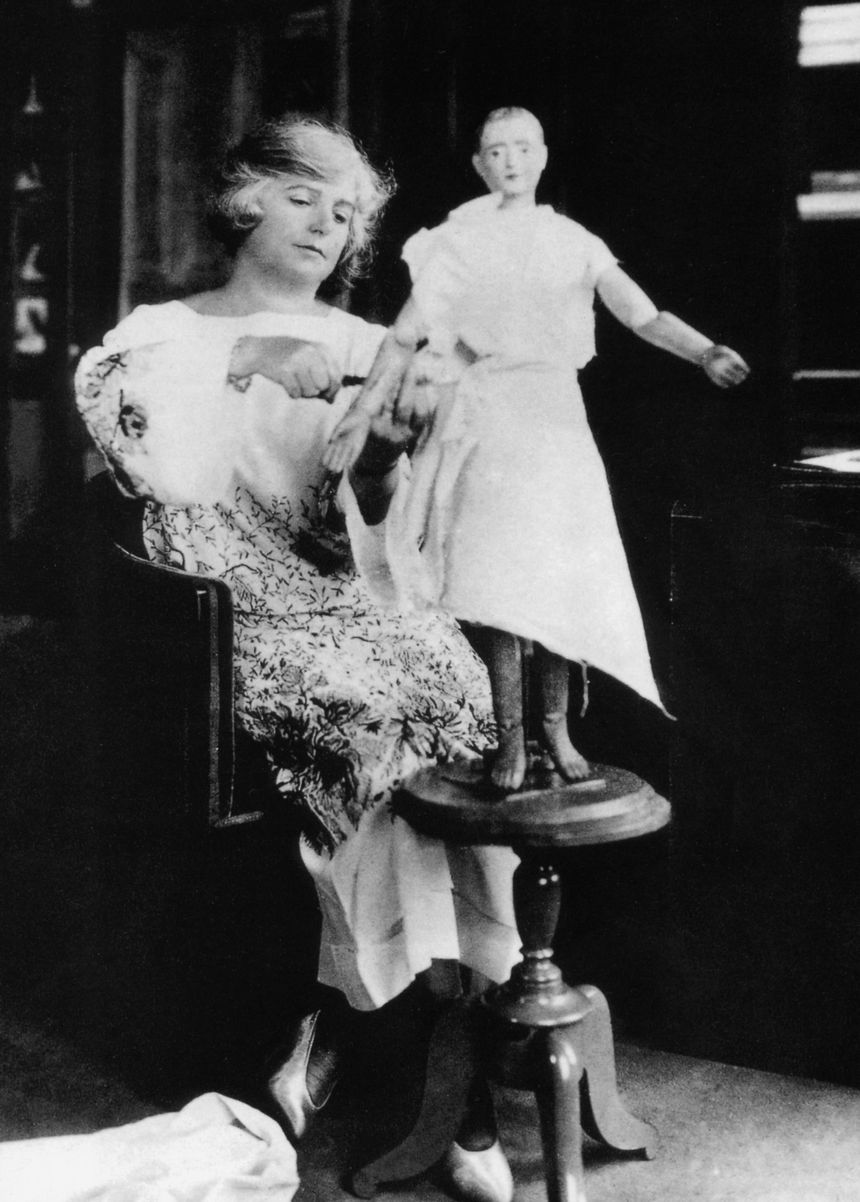
Madeleine Vionnet in the middle of designing a dress, on her famous wooden mannequin
It is for all these reasons that in 1939, Madeleine Vionnet was decorated as an officer of the Legion of Honor as a seamstress in Paris. His talent recognized in the eyes of all, it was during this same year that his career came to an end. The designer leaves behind an important legacy and while having revolutionized the world of haute couture, makes her name a real reference among great designers around the world.
After 1945, the influence on the great couturiers...
The name of Madeleine Vionnet is still unknown to the general public today. However, her creations inspired many future great couturiers and greatly impacted 20th century fashion. Karl Lagerfield thus declared during an interview in 1974: “Everyone, whether they like it or not, is influenced by Vionnet”. Indeed, her vision of haute couture revolutionized 20th century fashion and continues to do so today. Yohji Yamamoto, Japanese stylist, will present a strong link with Vionnet's philosophy and will say to himself: “in search of her shadow”.
Madeleine Vionnet has also contributed to the fame of certain designers such as Marcelle Chaumont. A Vionnet collaborator for years, she decided to create her own fashion house when the Vionnet house closed. It is to her that we owe the famous dress drapes, which subsequently inspired a large number of couturiers.
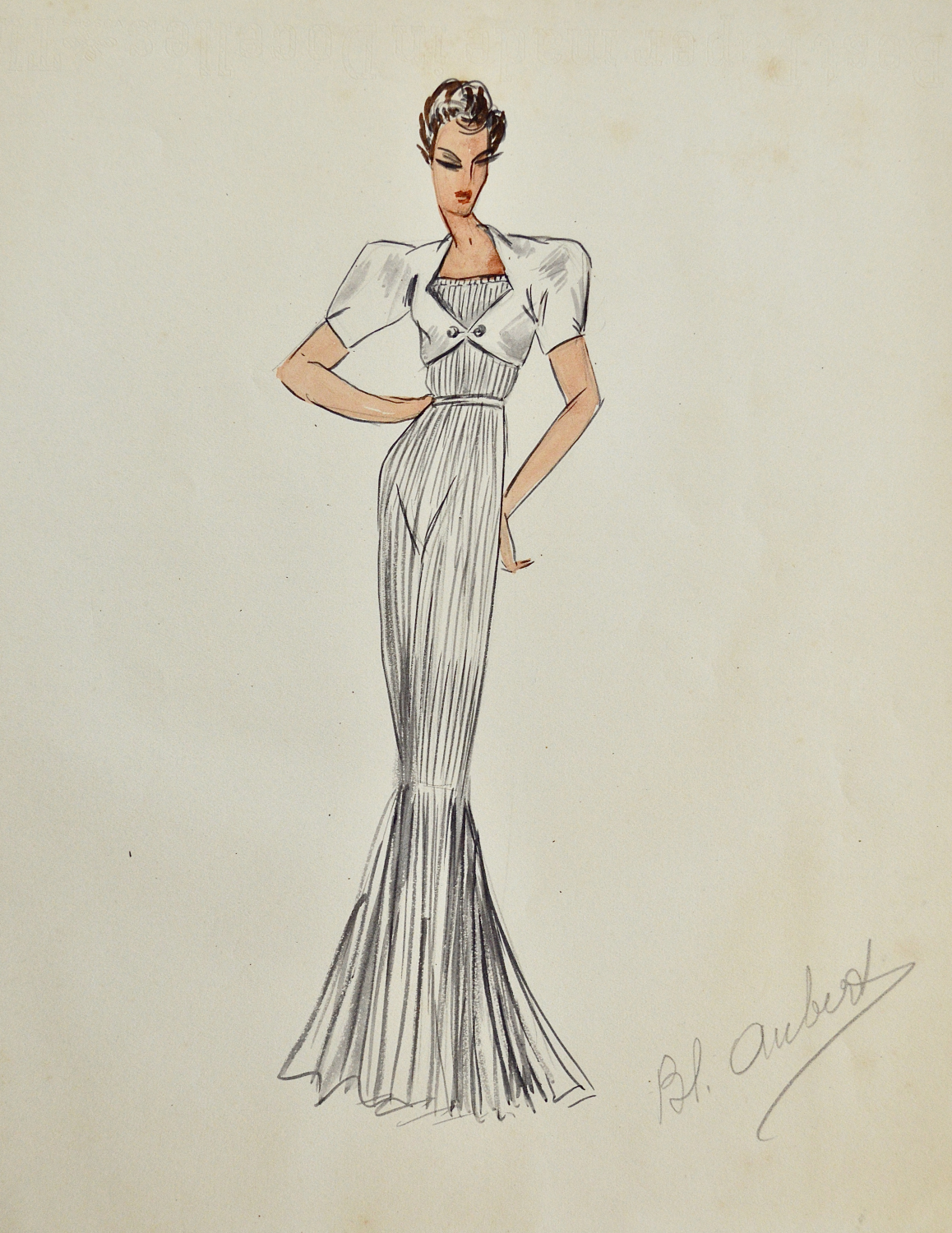
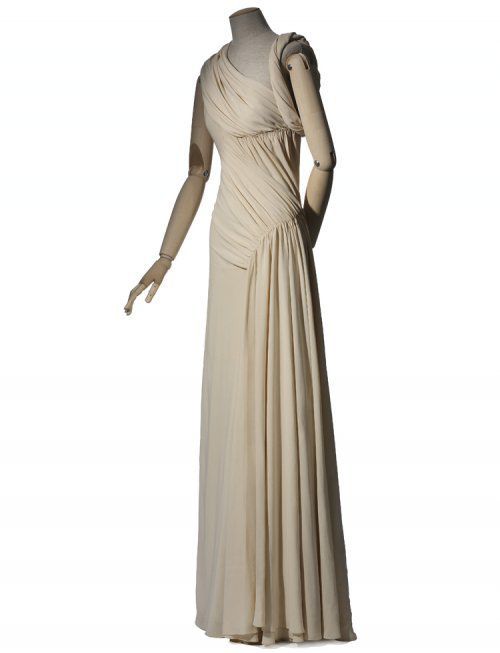
Drawing 44, lot 4 signed Blanche Aubert
(for sale on the site)
Evening dress, winter collection by Madeleine Vionnet (1935)
The decorative arts of Paris will devote an exhibition to Madeleine Vionnet in June 2009 "Madeleine Vionnet, fashion purist" and will thus pay homage to one of the greatest French seamstresses of the 20th century.
| The administrator of the site is online now! |